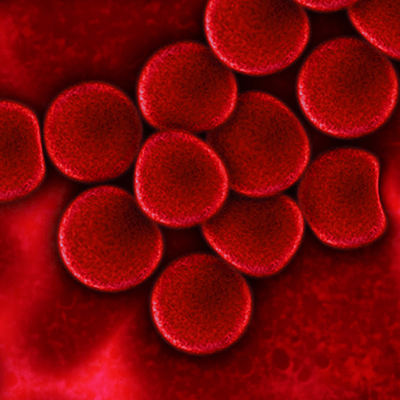Printed from acutecaretesting.org
October 2013
Causes of increased D-dimer
Summarized from Lippi G, Bonfanti L, Saccenti C et al. Causes of elevated D-dimer in patients admitted to a large urban emergency department. European Journal Internal Medicine 2013 Aug 12, available online ahead of publication.
D-dimers are protein products of cross-linked fibrin degradation that are present in the blood of most healthy individuals in only negligible amounts (of the order 100-200 ng/mL). As objective evidence of increased fibrinolysis, elevated blood concentration of D-dimer is by extension evidence of intravascular coagulation and thrombotic disease.
The D-dimer test is now routinely used in the first-line assessment of patients suspected of suffering venous thromboembolism (VTE), which can present as either deep vein thrombosis (DVT) or pulmonary embolism (PE).
Although elevation of D-dimer is invariably evident in those with VTE, it can also be evident in many other conditions that are associated with a pro-coagulant state; so that a positive D-dimer test cannot be used to diagnose VTE – further imaging testing is required to either confirm or exclude VTE.
However, a negative D-dimer test can be used to reliably exclude VTE among patients whose pre-test probability of VTE (based on clinical assessment) is low. Application of the test in this way allows rapid exclusion of VTE without the necessity for expensive, time-consuming imaging tests.
The low specificity of a positive D-dimer for VTE is strikingly highlighted by a recently published retrospective clinical study focusing on the use of D-dimer testing in an emergency department setting. The study population comprised all 1819 patients admitted to the emergency department of an Italian teaching hospital in 2012 who were suspected of having VTE and received a positive D-dimer test result.
For the D-dimer assay used at this hospital the diagnostic cut-off value for VTE, which distinguishes a positive from a negative D-dimer result, is 243 ng/mL. All 1819 patients were submitted for diagnostic imaging tests for detection or exclusion of VTE/PE because their D-dimer result was >243 ng/mL. The authors of this study retrieved the case histories of each of these patients to determine their final diagnosis.
For 172 patients the final diagnosis was either unavailable, unclear or mixed so the final study cohort comprised 1647 patients; they were predominantly elderly (mean age 77 years, range 25-102 years). Just 200 (12.1 %) patients had a final diagnosis of VTE (either DVT or PE). The most frequent diagnosis in this cohort of patients was infection.
This was the cause of positive D-dimer test for 257 (15.6 %) patients. Other non-VTE diagnoses included: syncope, 155 (9.4 %) patients; heart failure, 146 (8.9 %) patients; trauma, 135 (8.2 %) patients; and cancer, 95 (5.8 %) patients. In total, 31 different non-VTE final diagnoses were recorded for this cohort of patients with a positive D-dimer test.
Analysis of the data confirmed that the higher the D-dimer concentration, the greater is the likelihood of VTE. Mean D-dimer concentration (interquartile range) among patients with VTE was 2541 ng/mL (1133-3309 ng/mL) compared with 1030 ng/mL (696-2413 ng/mL) for those patients who had an alternative diagnosis.
Stratification of the whole cohort according to D-dimer concentration revealed that whilst only 4 % of patients with D-dimer <1000 ng/mL had VTE, this rose to 26.7 % among those whose D-dimer was >3000 ng/mL.
In discussion of their findings the authors speculate about the need for a re-appraisal of the currently used D-dimer cut-off value to exclude VTE in an emergency care setting among elderly patients with co-morbidities. They imply that it may be appropriate to limit VTE imaging in this group to those whose D-dimer is >1000 ng/mL, although they make no such recommendation.
Read more about d-dimer:
- Age-adjustment of the D-dimer cut-off value to improve the exclusion of thromboembolic events in older patients
- The clinical use of a D-dimer assay
- Comparing D-dimer assays using likelihood ratios and Fagan nomograms
- Assessment of plasma D-dimer as a diagnostic and prognostic aid for abdominal aortic aneurysm
- D-dimer assays - pitfalls of analytical comparisons
- The role of D-dimer in diagnosis of venous thromboembolism – a review
May contain information that is not supported by performance and intended use claims of Radiometer's products. See also Legal info.
Register for the related webinar
The Benefit of Using a D-dimer Assay with a High Clinical Specificity
Presented by Karin Strandberg, MD, PhD, Assoc. Prof.
Join the webinarAcute care testing handbook
Get the acute care testing handbook
Your practical guide to critical parameters in acute care testing.
Download nowScientific webinars
Check out the list of webinars
Radiometer and acutecaretesting.org present free educational webinars on topics surrounding acute care testing presented by international experts.
Go to webinars








